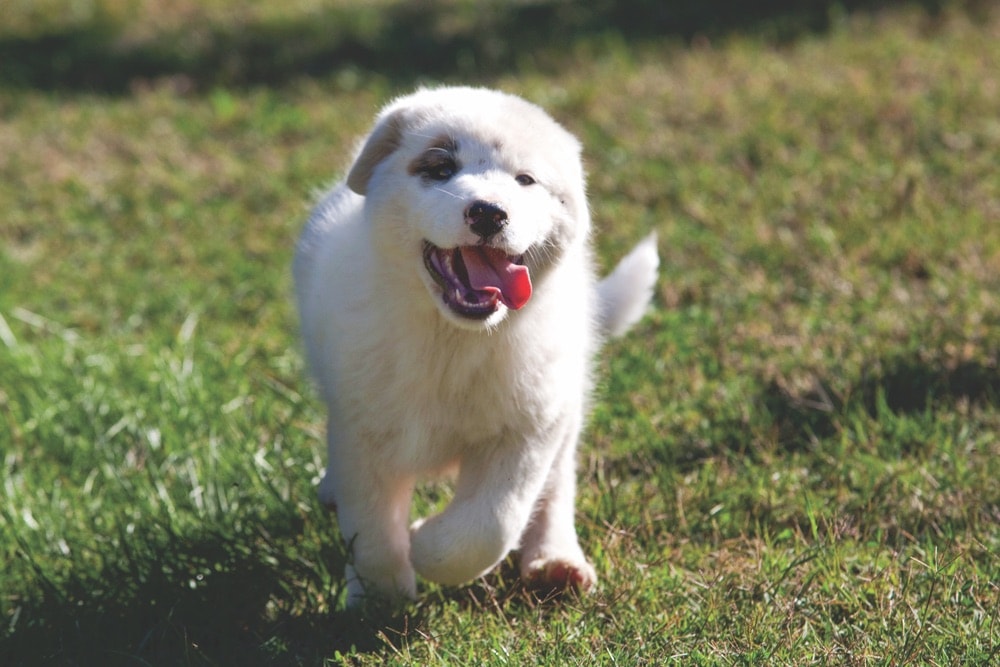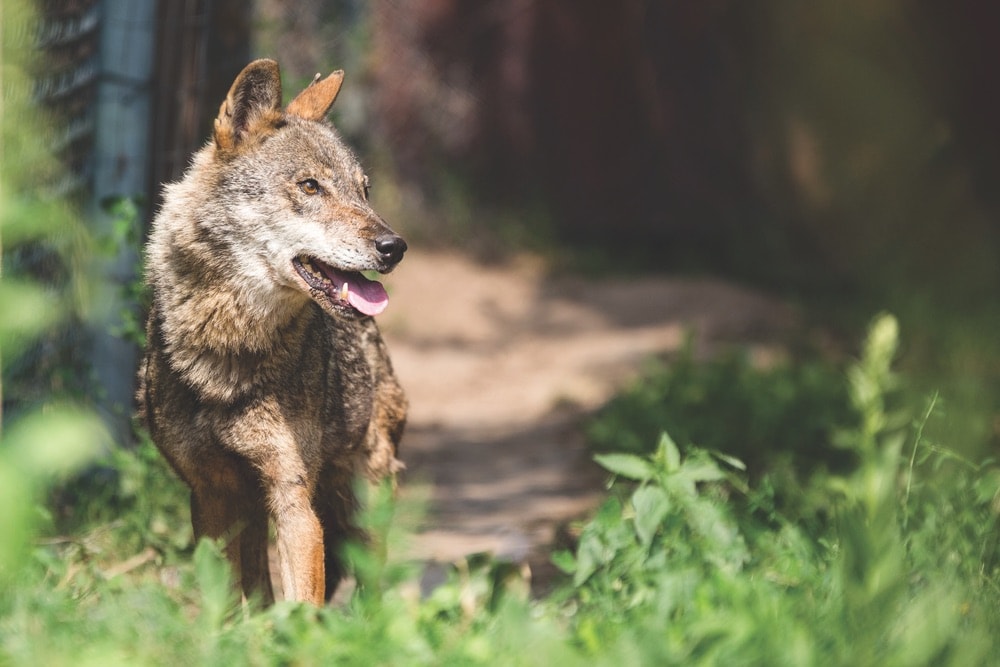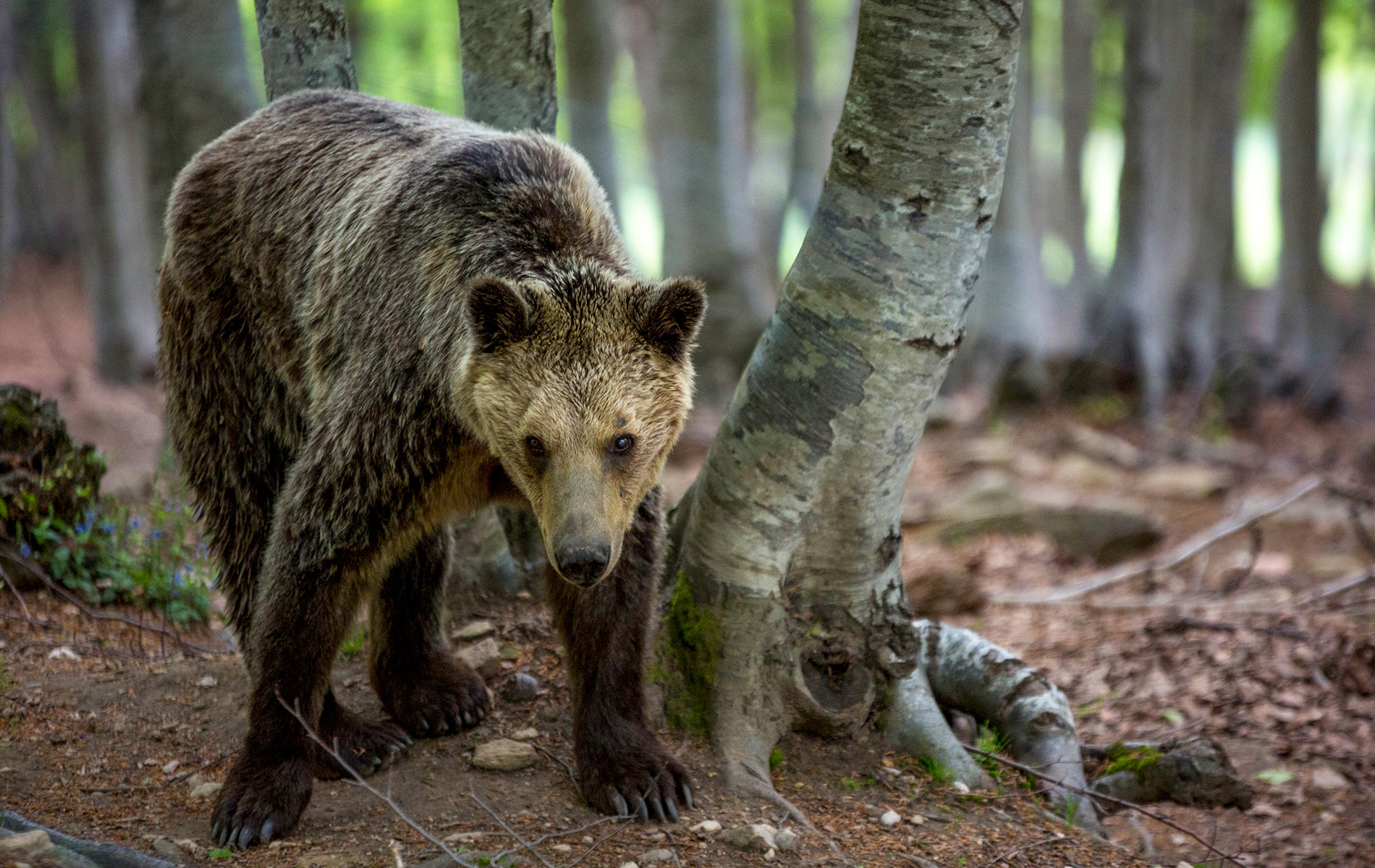
vie-magazine-arcturos-bear-sanctuary-greece-hero
The brown bear, the most common of all bear species in the world, used to roam North America, northern Mexico, Europe, Asia, the Middle East, and North Africa. Today, brown bears are found only in northwestern North America, Europe, and most of North Asia. In Greece, there are an estimated 450 bears living in two independent populations, which are not geographically linked.
Bears and Dogs and Wolves—Oh My!
Explore Greece beyond the Beaches and Islands
By Rebecca Hall | Photography courtesy of Arcturos Bear Sanctuary
Mention to your friends, family, and colleagues that your next vacation will involve a trip to the southern European country of Greece, and many are sure to assume you’ll head to the islands of Santorini or Mykonos. Maybe the well informed will think of the Peloponnese—the peninsula southwest of Athens famous for its wine production, hiking, and archaeological sites. But many don’t equate Greece with wild animals, such as brown bears and wolves, or with the ability to experience them. Come with me on a trip to discover more about the rescue and rehabilitation project of Arcturos bear and wolf sanctuary and the region it inhabits.
One hour from Greece’s northern city of Thessaloniki or a five-hour drive from Athens along the Ionian highway that hugs the west coast of the country, you’ll find yourself in the protected village of Nymfaio within the Florina region. Nestled on Mount Vitsi in a forest of beech trees, the village is included among UNESCO’s ten most picturesque villages in Europe, and by law, any new buildings or renovations must not detract from the original stone architecture and mansions so typical of the region. The village is like stepping into a fairy tale or back in time—indeed, it dates back to approximately 1385 when the Vlach travelers (Eastern Romance language–speaking people of the Balkans) settled here after fleeing Ottoman invaders. Their language has been handed down, and it is possible, occasionally, to still hear it spoken among the older generation in the village.
Aside from Nymfaio’s beauty, one of the most important features of the village is the Arcturos bear and wolf sanctuary.
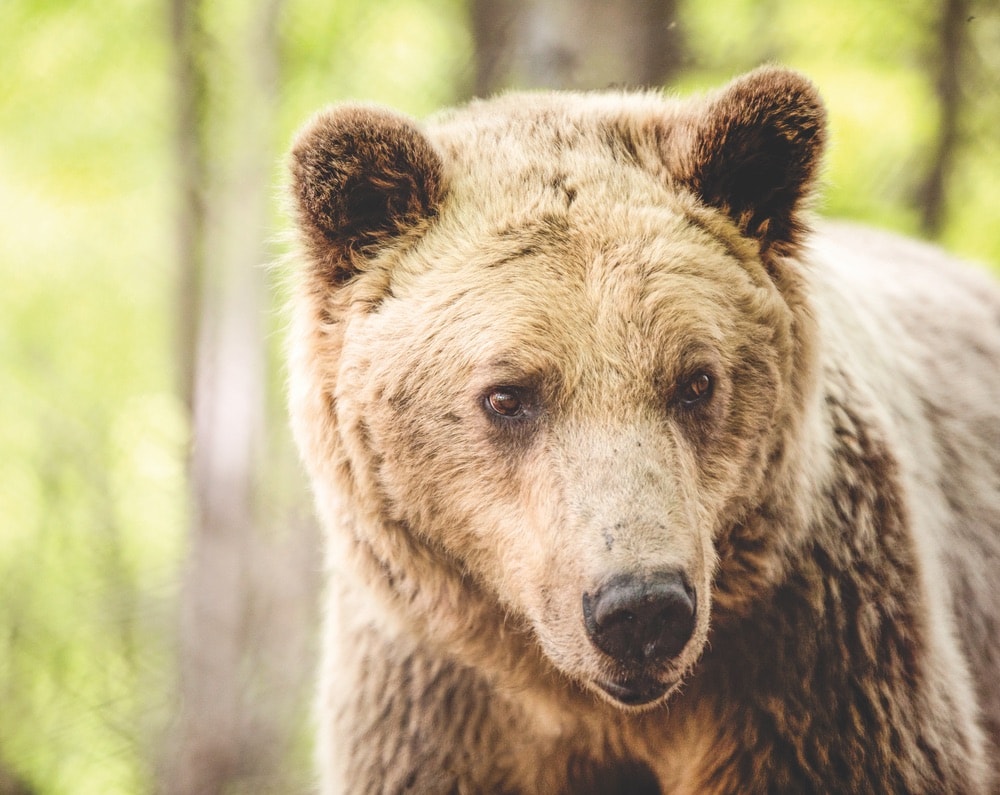
Brown Bears in Greece: A Brief History
The brown bear is Europe’s largest land mammal and holds significance to many countries: it’s Finland’s national animal, it’s minted on coins in Croatia, and Slovenia has one of the biggest populations of them within the continent. Although Greece is not renowned for these creatures, they do exist there. Threatened by deforestation, road construction, and hunting in the Pindus Mountains that skirt the northern part of the country, the bears’ natural habitat was diminishing. At one point, the wild population decreased to only two hundred bears. And, until as recently as the 1990s, many people kept bears in captivity, some using these magnificent creatures as “dancing bears” to make money.
The Dancing Bears of Europe
A dancing bear is exactly as its name suggests: a brown bear kept on a chain and paraded in the streets to a drumbeat, encouraging the public to part with their cash for a look. It’s a cruel practice that goes back to ancient times; a bear was made to walk on hot coals or someone would set fire to its paws so that he would rise up on two legs. Then a drumbeat would start, and the bear would “dance” while trying to extinguish the fire. This would later trigger a Pavlovian response: every time the bear would hear the drumbeat, he’d associate it with fire and start to jump from paw to paw to extinguish an imaginary fire. The practice has been outlawed in many countries, but unfortunately, there are still some dancing bears being exploited.
The declining numbers of wild bears in Greece, topped with the numbers of rescued dancing bears, brought Arcturos to life.
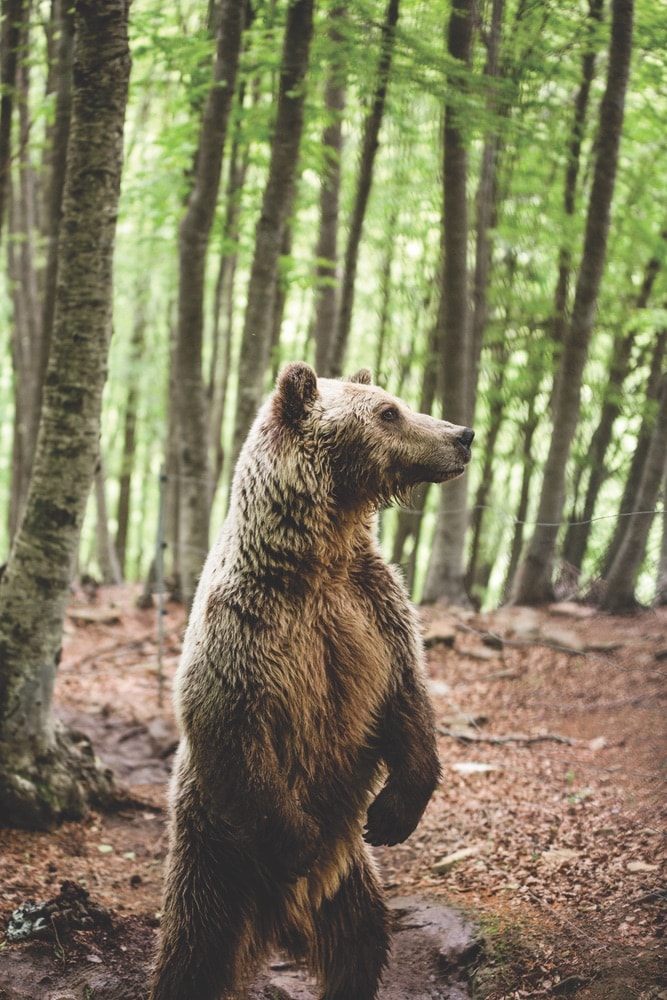
A brown bear stands on its hind legs. The largest bear populations in Greece live in the Pindus and Rhodope Mountains.
Arcturos Bear Sanctuary
Rewind to 1992 when the sanctuary was established: on a trip to the Balkans, the son of Thessaloniki’s mayor was particularly disturbed after seeing a dancing bear, and this forward-thinking, straight-talking mayor decided something had to be done. Arcturos was born—the name originating from the Ancient Greek arktos, meaning “bear,” and Arcturus, meaning “guardian of the bear.” Think of the Great Bear you can see in the constellations of the night sky and the brightest star near it.
Initially the sanctuary rescued dancing bears, and in 2012 Greece successfully passed a law that no animals were to be used in circuses; Greece was the second country in the world (after Bolivia) to do so. Circus bears were also brought to the sanctuary. Then, with the development of roads and infrastructure in the region, wild bears were being hit by cars, causing cubs to lose their mothers, and Arcturos expanded.
Arcturos was born—the name originating from the Ancient Greek arktos, meaning “bear,” and Arcturus, meaning “guardian of the bear.” Think of the Great Bear you can see in the constellations of the night sky and the brightest star near it.
As of 2018, Arcturos houses fourteen bears and is awaiting another six. All its bears had a lousy start in life, either as dancing bears in the Balkans or because of human encroachment. The twenty-four-acre wildlife sanctuary ensures that these bears can safely live out the rest of their lives in nature, as they should.
Sanctuary bears do not breed and cannot be released back into the wild due to being too long in captivity or too severely injured, but hope is not lost for their species. Thanks to the efforts of Arcturos, local governments are taking ecological habitats and wildlife corridors into consideration when planning infrastructure projects, and the bear numbers in Greece are on the rise. There are now approximately five hundred bears in the wild, and the majority are found in the Pindus mountain range in the northeast, where Nymfaio is located.
- A Greek shepherd puppy; this breed will guard its flock against attacks from large carnivores, such as bears and wolves.
- Melina joined the Arcturos Wolf Sanctuary in June 2015. She came from Thessaloniki Zoo, where she was born.
Wolf Sanctuary and Greek Sheepdog Breeding Program
Arcturos offers not only the bear sanctuary near Nymfaio but also a wolf sanctuary, which is located a few kilometers away outside the small village of Amyntaio. The refuge was created in the mid-1990s to help these majestic creatures that were either being held in captivity or hunted. There are seven resident wolves, all originally from Thessaloniki Zoo. Again, they do not breed and won’t be able to be released back into the wild, but, thanks in part to the education programs of Arcturos, wild wolf numbers in Greece are increasing.
What do we mean by education? As mentioned previously, one of the main issues of dwindling wolf numbers was the fact they were hunted and killed, mainly by shepherds, as the wolves would kill their flocks and therefore threaten their livelihoods.
Not only does Arcturos rehabilitate bears and wolves, but it also started a Greek shepherd dog breeding program. The Greek shepherd (or Greek sheepdog) is a special breed that is incredibly loyal and strong, aggressively protecting its flock. They have instincts similar to wolves, meaning the dogs understand the thought processes and hunting strategies of these natural predators.
Arcturos breeds these sheepdogs and distributes them freely to local shepherds, removing the need to hunt and kill Greece’s wolf population.
While we (thankfully) did not see wild bears or wolves during a hike around the surrounding countryside of Nymfaio, the bears were easily visible within the sanctuary, which receives about seventy thousand visitors each year. With twenty staff members taking care of the animals and leading tours and education initiatives, the refuge is funded by entrance fees (about six euros per person), donations, its Sponsor a Bear/Wolf program, and the gift shop. Despite the financial struggles of Greece, it is gratifying that Arcturos is still able to maintain its important missions of conservation and education.
— V —
The writer’s visit to Arcturos was organized by Elena Papanicolaou of luxury Greek travel specialists Fly Me to the Moon. Visit FlyMetotheMoonTravel.com for details about this and other luxury specialized itineraries around Greece and the islands.
Rebecca Hall is an English language teacher turned travel writer and novelist. After life in the UK became too cold, she moved to sunny Greece and admits the slightly chaotic nature of it suits her very well. She writes for various online publications such as Weather2Travel, has contributed to guidebooks such as The Rough Guide to Greece, The Rough Guide to the Greek Islands, and The Rough Guide to Portugal, and maintains her travel blog, Life Beyond Borders, encouraging others to travel beyond the borders of geography and their minds. Her debut novel, Girl Gone Greek, was released at the height of the Greek debt crisis in 2015 with the aim to bring a positive view of the country; it has been written into a screenplay in the hope that it will be picked up for production.
Share This Story!
KEEP UP WITH THE LATEST STORIES FROM VIE



